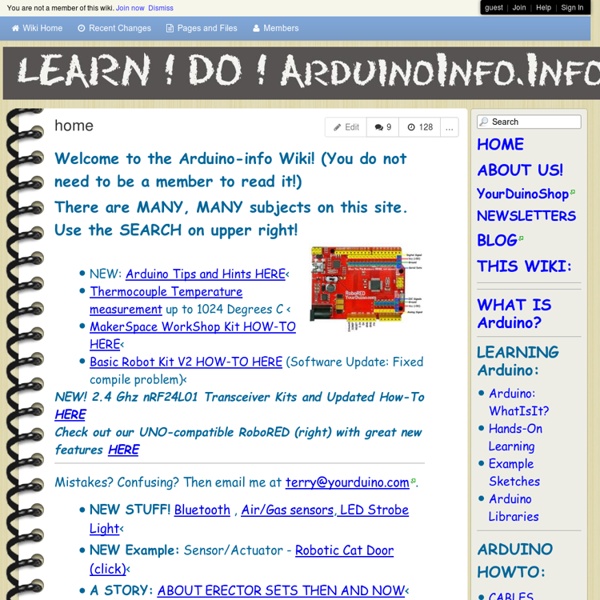Arduino-info - home

PlanetArduino
Arduino Arts - Cool Arduino Projects, Tutorials and More!
Scargill's Tech Blog
DIY ESP8266 Development Board
A DIY ESP8266 Development Board from Electro-Labs: In this project, we are building an ESP8266 Development Board which lets the user make connection to ESP8266 from a PIC microcontroller and a PC. The board also provides all the needs to be used as microcontroller peripherals such as LCD display, pusbuttons, indicator LEDs and GPIO extension. The PC connection is done by the help of FT232RL USB-UART converter over a Mini-USB connector. Project info at Electro-Labs.
Home
Geek Grandad | Robotics and domotics
CNXSoft – Embedded Systems News
Home automation
Please enter your email to continue: Already have an account? Sign in Home automation Smart homes, connected homes... Follow Home automation Follow Home automation 62 projects902 followers Home automation Projects62Community902 Automated Home using Raspberry Pi 2 (Windows 10 IoT Core) and Arduino. Home Automation using Raspberry Pi 2 and Windows 10 IoT Project tutorial by Anurag S. 40,647 views35 comments161 respects A smart home solution to all your separated "smart" devices that you can host yourself, customize, and add functionality to. Open Smart Hub : Home Automation Project in progress by Anthony Ngu 26,756 views24 comments182 respects I decided to build a wifi-enabled outlet with my Spark Core. Building a WiFi Outlet Project tutorial by Daniel Nordness 46,716 views11 comments138 respects Open source Home Automation SDK including Hardware Home Automation (with Raspberry Pi 2 and Windows 10 IoT) Project tutorial by Christian Kratky 19,373 views16 comments113 respects Project tutorial by james wolf
Related:
Related:



